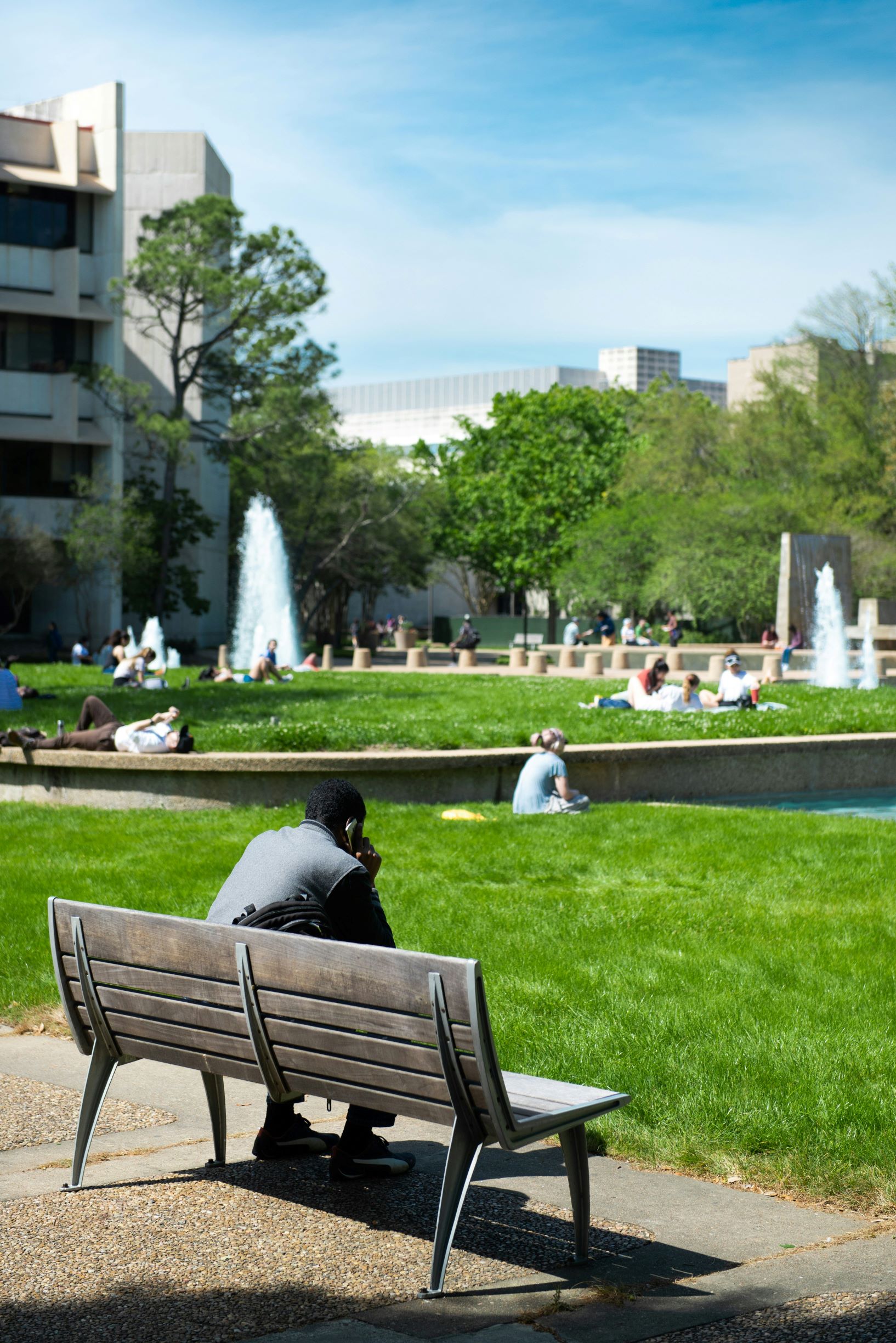By Frank J. Martin
Your feet and heart are always in the same place
— African ProverbYou can’t understand most of the important things from a distance, Brian. You have to get close.
— Quote from Bryan Stevenson’s Grandmother to Bryan from Just Mercy
There are many ways we can, and should, support civil society. We should pay our fair share of taxes, vote, participate in some form of national service, abide by, and support, the laws and norms that contribute to a well-ordered society, and countless others. These are all important. There is another way we can support society — spending time in the public square. I mean this in its most elemental way. Physically staying connected to society by using public spaces, services, and amenities as much as possible.

For many, the public square is the only option. Advocating for increased participation by all segments of society is done, in part, to ensure that for those for whom a private option is not available, the public square offers the necessary level of service, dignity, joy, and utility so that everyone in our society has an opportunity to thrive. To use the nomenclature of my friend at the San Francisco Municipal Transportation Agency, this short essay is directed to “choice riders.”
The central danger that wealth provides is the ability to remove oneself and one’s loved ones from the public square. Wealth provides the opportunity to soundproof our lives from the demands for justice implicit in the panhandler’s plea and bubble-wrap ourselves to avoid the rough edges of our public infrastructure. The ability and opportunity to leave the public square increases proportionally with wealth, as one’s wealth increases one must actively resist the urges and opportunities to escape the rapids and eddies of a life lived in the public square (sharing public space, amenities, and services) for the pacific waters of private spaces.
Data
We must begin with data. Doing a simple exercise to bring awareness to how we divide our time currently between public and private spaces. We begin by looking at our life and the major components of our time spent outside of the home and our jobs. We should think in simple, broad-stroke percentages of how we divide our time between public and private spaces. The categories that most easily come to mind for me are K-12 education, daily commute, health care, weekend recreation, non-commute transportation, celebrations, exercise, spaces where we gather to socialize with friends and family, public safety, and vacations.
Where do our kids go to school? How do we get to work? On weekends are we at public parks, libraries, and public events? To get to events around town after work and on weekends are we driving or taking the bus? Where do we hold celebrations outside of our homes? Do we rely on private security services to make us feel safe? How often are we on the sidewalks or at community events? These questions, and other versions of them, will help us understand what our level of involvement is today.
More importantly, however, a systematic review highlights for us key categories of civic engagement and can help us home in on areas for change – it shows us the “low hanging fruit.” We gain clarity on potential opportunities to shift our behavior in a wide range of activities to increase our participation in the public square. It is unlikely that an equal rebalancing across each category will work for many people but choosing a few to make more dramatic shifts will improve one’s overall participation. If you have concluded that your kids must attend private schools, then perhaps you try to move the dial more dramatically around your weekend recreation, your time walking on sidewalks, your commute, or other areas. The review shows you that there are many places where the public space/private space option exists and empowers us to focus on those areas that are the most easily modified based on our priorities.
Why?

Why is spending time in the public square important? If we can afford the private option without harming others, what moral justifications require us to modify our behavior in favor of the public square? Three justifications resonate with me, though I am sure there are many others.
First, proximity fosters understanding and connection. The Civil Rights Act and the Americans with Disabilities Act are predicated on the idea that by simply being together we build empathy, understanding, and concern for those in society who are different from us. These ideas are based on “contact theory” research and although it is not perfect (e.g., it has been shown that the contact needs to be as equals to build authentic bonds), a basic commitment to integration (racial, economic, etc.) continues to be a hallmark of programs designed to keep society together and reducing the harm from prior discrimination.
Second, to meet our obligations as citizens to vote on questions (candidates, propositions, etc.) we must know what is happening in society. We have a moral obligation, I believe, to ensure that our votes are leading society in a beneficial direction. I make no normative claims on what that direction needs to be, but rather, simply that one can only arrive at the necessary viewpoint once they understand “what is going on” in society by experiencing that first person, or at least having some level of personal exposure. A middle class person who has never experienced poverty in their life will not be able to fully understand how daily hunger impacts educational attainment, behavior, and other areas of life, but attending a public school with neighbors who are receiving free and reduced price breakfast and lunch will help people understand the role that nutrition, and access to nutrition, plays on the day-to-day lives of those who don’t have enough money for food.
Third, investment follows use. The public square, like all spaces, needs continual investment. Investment, especially by those who have the resources to invest themselves or the political or societal capital to influence governmental expenditures, requires an interest in the underlying societal asset. Libraries, bus routes, public parks, police forces, all require public investment. If we personally never use any of these public spaces, services, or goods it is unlikely that we will care much about investing in them. I often think about the building of elegant lodges in our National Parks. Conservationists and those dedicated to the success of the National Parks Service understood early on that you needed the wealthy and powerful to come and experience the spectacular nature of these places so that they would want to keep them protected. And so, the Park Service built them fancy hotels to visit.
Turning toward the square
What is to be done? Modesty in prescription is appropriate. A few small steps at a broad level will have a meaningful impact on society. I offer two suggestions. First, when you have the option to spend time in the public square or choose a private option (in any category) become aware of this choice position and set your default to the public square. Absent a compelling reason to select the private option, try to stay in the public square. Second, look at your “review” and try to increase your involvement in the public square by 10% using the categories that are easiest for you. Investing with our presence will pay significant dividends for our society.

Frank J. Martin is an attorney and former non-profit board member and executive who lives in Oakland, California. He served as Interim Executive Director of the UC Berkeley School of Law’s East Bay Community Law Center, Board Chair of YR Media (formerly Youth Radio), and Treasurer of Centro Legal de la Raza.



